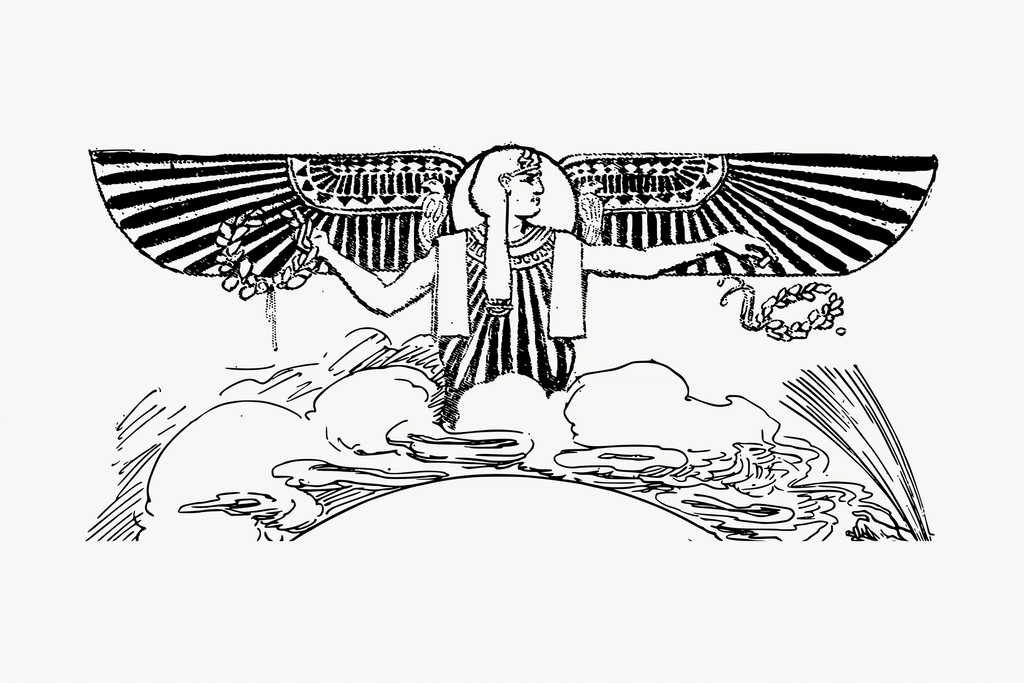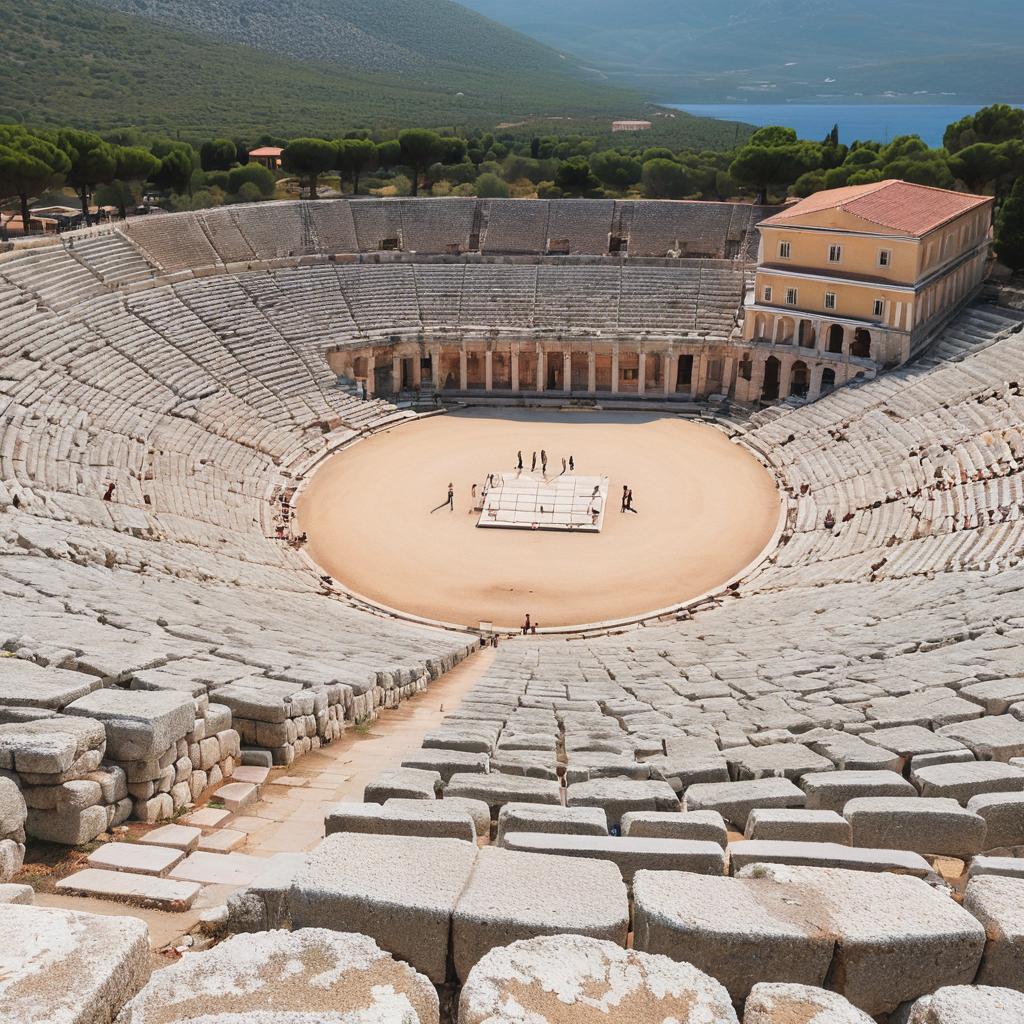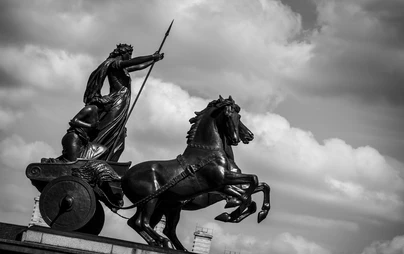- Historical Context
- Ra: The Majestic Sun God
- Osiris: The Benevolent Ruler of the Afterlife
- Isis: The Divine Mother and Mistress of Magic
- Horus: The Divine Falcon and Symbol of Kingship
- Anubis: Guardian of the Dead and Guide to the Afterlife
- Thoth: The Wise Scribe and Master of Magic
Historical Context

Nestled along the banks of the mighty Nile River amidst the golden sands of the desert thrived one of the most enigmatic civilisations in human history – ancient Egypt. Within the grand tapestry of its culture and beliefs, one aspect shines with a mesmerising brilliance: the pantheon of Egyptian gods.
In the land where the sun ruled supreme and the afterlife beckoned with promises of eternal bliss, the ancient Egyptians worshipped a diverse array of gods and goddesses. These deities, with their complex mythologies and timeless symbolism, not only governed the forces of nature but also intertwined deeply with every facet of Egyptian life – from birth to death, from sowing to harvest.
Join us on a journey through the sands of time as we uncover the mysteries and marvels of ancient Egyptian gods. From the majestic Ra, the sun god who sailed across the sky in his solar barque, to the compassionate Isis, who wept for her slain husband Osiris and sought to piece him back together, each deity offers a glimpse into the rich tapestry of Egyptian spirituality.
Ra: The Majestic Sun God

Among the pantheon of ancient Egyptian gods, none shines as brightly as Ra, the radiant deity who ascended to the heavens each day to illuminate the world with his golden light. Revered as the sun god and the creator of all life, Ra held a central place in Egyptian mythology and religious belief.
Divine Sovereignty:
Ra was not merely a celestial body traversing the sky; he was the embodiment of divine kingship and cosmic order. In Egyptian cosmology, it was Ra who created himself from the primordial waters of Nun, emerging as a radiant egg that birthed the universe. With his supreme authority, Ra established ma’at, the principle of harmony and balance, upon which all existence rested.
Daily Journey:
Each morning, Ra embarked on a wondrous journey aboard his solar barque, sailing across the sky from east to west. With the dawn, he emerged from the eastern horizon, his brilliant rays dispelling the darkness of night and bringing warmth and vitality to the earth. Throughout the day, Ra traversed the heavens, casting his benevolent gaze upon the world below.
Nightly Voyage:
But Ra’s journey did not end with the setting of the sun. At dusk, he descended into the perilous realm of Duat, the underworld, where he faced fierce challenges and battled the forces of chaos to ensure the dawn of a new day. Guided by the protective goddess Nut, Ra navigated the treacherous waters of the underworld, emerging victorious to begin his journey anew.
Symbolism and Iconography:
In art and iconography, Ra was often depicted as a man with the head of a falcon, crowned with the sun disc encircled by a sacred cobra, the uraeus. This symbolic imagery represented Ra’s dual nature as both a solar deity and a powerful avian deity, soaring across the sky with grace and majesty.
Legacy and Worship:
Ra’s influence extended far beyond the borders of ancient Egypt, permeating the cultural and religious landscape of the Mediterranean world. In later periods, such as the New Kingdom, Ra merged with other deities to form syncretic gods like Amun-Ra, reflecting the ever-evolving nature of Egyptian religious beliefs.
Today, the legacy of Ra endures in the hearts and minds of those who are captivated by the splendour of the sun and the mysteries of the cosmos. As we bask in the warmth of the sun’s rays, let us remember the timeless majesty of Ra, the sun god who illuminates our world with his eternal light.
Osiris: The Benevolent Ruler of the Afterlife

In the heart of ancient Egyptian mythology, amidst the swirling sands of the desert, stands the figure of Osiris, a god both feared and revered as the embodiment of life, death, and resurrection. As the god of the afterlife and the ruler of the underworld, Osiris held a profound significance in Egyptian religious belief and funerary practices.
The Myth of Osiris:
The story of Osiris is one of triumph and tragedy, of betrayal and resurrection. According to myth, Osiris was the son of the earth god, Geb, and the sky goddess, Nut, destined to inherit the throne of Egypt. However, his jealous brother, Set, harboured ambitions of his own and conspired to usurp the throne.
In a cruel and calculated act, Set lured Osiris into a trap and murdered him, dismembering his body and scattering the pieces across the land. Devastated by the loss of her husband, Osiris’s wife, Isis, embarked on a quest to retrieve his scattered remains and restore him to life.
Through her unwavering love and magical prowess, Isis succeeded in reassembling Osiris’s body, binding it together with linen bandages and anointing it with sacred oils. With her divine intervention, Osiris rose from the dead, transformed into the king of the afterlife, and ascended to his rightful place among the gods.
Divine Sovereignty and Judgment:
As the ruler of the underworld, Osiris presided over the realm of Duat, where the souls of the deceased underwent judgment before him. In the Hall of Ma’at, the goddess of truth and justice, the hearts of the departed were weighed against the feather of Ma’at, symbolizing the principles of harmony and order.
Those whose hearts were found to be pure and free from sin were granted entry into the paradise of the afterlife, where they would dwell in eternal bliss alongside Osiris. However, those deemed unworthy faced the terrifying prospect of annihilation, condemned to wander the desolate wastes of the underworld for eternity.
Funerary Practices and Cult Worship:
The cult of Osiris played a central role in Egyptian funerary practices, offering hope and reassurance to the living and the dead alike. Temples dedicated to Osiris dotted the landscape of ancient Egypt, serving as centres of worship and pilgrimage for devotees seeking divine favour and spiritual guidance.
The festival of Osiris, known as the “Feast of the Beautiful Reunion,” was celebrated with great pomp and ceremony, featuring processions, offerings, and dramatic reenactments of the myth of Osiris’s resurrection. Through these rituals, the ancient Egyptians sought to honour Osiris’s memory and ensure his continued benevolence in the afterlife.
Legacy and Influence:
The legacy of Osiris extends far beyond the boundaries of ancient Egypt, permeating the cultural and religious landscape of the Mediterranean world and beyond. In later periods, Osiris became associated with the Greek god Dionysus and the Roman god Bacchus, reflecting the enduring appeal of his story and symbolism.
Today, the figure of Osiris continues to captivate the imagination of scholars, artists, and spiritual seekers alike, offering a timeless reminder of the cyclical nature of life, death, and rebirth. As we contemplate the mysteries of existence, let us remember Osiris, the eternal king of the afterlife, who guides us through the darkness to the light beyond.
Isis: The Divine Mother and Mistress of Magic

In the pantheon of ancient Egyptian deities, few figures evoke as much reverence and adoration as Isis, the enchanting goddess of magic, fertility, and motherhood. With her boundless compassion and unwavering devotion, Isis held a central place in Egyptian religious belief and mythology, revered as the divine mother of all creation.
Maternal Protector:
Isis was revered as the epitome of maternal love and protection, embodying the nurturing and compassionate aspects of the divine feminine. As the wife of Osiris and the mother of Horus, Isis personified the eternal cycle of birth, life, and regeneration. She watched over mothers and children, offering solace and guidance in times of need.
Mistress of Magic:
Isis was also celebrated as the mistress of magic and the wielder of powerful enchantments. According to myth, it was Isis who discovered the secret name of Ra, the sun god, enabling her to harness the divine power of creation and transformation. With her magical prowess, Isis performed miraculous feats, healing the sick, resurrecting the dead, and thwarting the schemes of her enemies.
The Quest for Osiris:
Isis’s most famous myth is her quest to resurrect her beloved husband, Osiris, after his murder at the hands of Set. Devastated by grief, Isis embarked on a perilous journey across the land, searching for the scattered remains of Osiris’s body. Through her unwavering determination and magical ingenuity, Isis succeeded in reassembling Osiris’s body and restoring him to life, albeit as the king of the afterlife.
Iconography and Symbols:
In art and iconography, Isis was often depicted as a woman wearing a throne-shaped headdress, symbolizing her role as the queen of the gods and the divine protector of the pharaohs. She was sometimes portrayed with outstretched wings, embracing her worshippers with love and compassion. In her hands, she often held the ankh, the symbol of life, and the sceptre, representing her authority and power.
Cult Worship and Legacy:
The cult of Isis spread far beyond the borders of ancient Egypt, permeating the cultural and religious landscape of the Mediterranean world. Temples dedicated to Isis dotted the ancient cities of Greece and Rome, where she was worshipped as a universal goddess of healing, wisdom, and divine love. Even today, the figure of Isis continues to inspire devotion and reverence among modern pagans and spiritual seekers around the world.
In the embrace of Isis, we find solace and strength, wisdom and compassion. As we journey through the mysteries of life, let us draw inspiration from the divine mother who watches over us with boundless love and eternal grace.
Horus: The Divine Falcon and Symbol of Kingship

In the vast pantheon of ancient Egyptian gods, none epitomizes the virtues of kingship and divine protection quite like Horus, the majestic falcon-headed deity who ruled over the heavens and watched over the land of Egypt with unwavering vigilance.
The Avenger of Osiris:
Horus’s mythological origins are deeply intertwined with the story of his father, Osiris, the slain king of Egypt. According to myth, after the treacherous murder of Osiris at the hands of his jealous brother, Set, Horus emerged as the avenger of his father’s death, determined to restore order and justice to the land.
The Divine Heir:
As the son of Osiris and Isis, Horus was destined to inherit the throne of Egypt and uphold the sacred principles of ma’at, the cosmic order that governed all existence. From his celestial perch in the heavens, Horus watched over the land with keen eyes, ensuring that the forces of chaos were kept at bay and that justice prevailed.
The Protector of Pharaohs:
Horus was revered as the divine patron of the pharaohs, the earthly rulers of Egypt who served as his mortal counterparts. It was believed that each reigning pharaoh was the living embodiment of Horus, entrusted with the sacred duty of upholding ma’at and preserving the prosperity of the kingdom.
The Falcon God:
In art and iconography, Horus was often depicted as a falcon-headed man, wearing the double crown of Upper and Lower Egypt to symbolize his dominion over the entire land. He was sometimes portrayed with the sun disc nestled between his outstretched wings, representing his association with the sun and the sky.
The Battle with Set:
One of the most enduring myths surrounding Horus is his epic battle with Set, the god of chaos and disorder. In a series of fierce confrontations, Horus and Set clashed in a titanic struggle for supremacy, each determined to emerge victorious. Ultimately, it was Horus who triumphed over Set, vanquishing the forces of darkness and reclaiming the throne of Egypt for his father, Osiris.
Legacy and Influence:
The cult of Horus played a central role in Egyptian religious belief and kingship, with temples dedicated to the falcon god scattered throughout the land. Even after the decline of ancient Egypt, Horus’s legacy endured, permeating the cultural and religious landscape of the Mediterranean world and beyond.
In the regal figure of Horus, we find a timeless symbol of kingship, courage, and divine protection. As we gaze upon the horizon and marvel at the soaring flight of the falcon, let us remember the eternal majesty of Horus, the celestial guardian who watches over us with eyes as sharp as the sun’s rays.
Anubis: Guardian of the Dead and Guide to the Afterlife

In the shadowy realm of the ancient Egyptian underworld, there stands a figure shrouded in mystery and reverence – Anubis, the jackal-headed god who presides over the rites of mummification and guides the souls of the departed on their journey to the afterlife.
The Jackal God:
Anubis is often depicted as a jackal-headed deity with a sleek and elegant body that evokes the stealth and grace of the desert scavenger. In Egyptian mythology, the jackal was associated with death and funerary practices, as these creatures were often seen prowling the necropolises and cemeteries in search of carrion.
The Guardian of the Dead:
Anubis played a crucial role in the funerary rituals of ancient Egypt, overseeing the process of mummification and ensuring that the deceased were properly prepared for the journey to the afterlife. It was believed that Anubis watched over the embalmers as they performed their sacred duties, guiding their hands with divine precision.
The Weigher of the Heart:
One of Anubis’s most important roles was as the guardian of the Scales of Ma’at, where the hearts of the deceased were weighed against the feather of truth and justice. In the Hall of Judgment, the soul of the departed stood before Anubis and the goddess Ma’at, where their heart was placed on one side of the scales and the feather of Ma’at on the other.
If the heart was found to be lighter than the feather, it meant that the soul had lived a righteous life and was deemed worthy of entering the paradise of the afterlife. However, if the heart was heavy with sin and wrongdoing, it was devoured by the monstrous beast Ammit, condemning the soul to oblivion.
The Companion of Osiris:
Anubis was closely associated with Osiris, the god of the afterlife and the ruler of the underworld. According to myth, it was Anubis who embalmed the body of Osiris after his murder by Set, preparing him for his journey to the afterlife. In gratitude for his service, Osiris appointed Anubis as his loyal companion and chief guardian of the dead.
Legacy and Worship:
The cult of Anubis was widespread throughout ancient Egypt, with temples and shrines dedicated to the jackal god in every major city. Even after the decline of ancient Egyptian civilization, Anubis’s legacy endured, permeating the cultural and religious landscape of the Mediterranean world and beyond.
In the enigmatic figure of Anubis, we find a timeless symbol of death, rebirth, and the mysteries of the afterlife. As we contemplate the journey of the soul beyond the veil of mortality, let us remember Anubis, the faithful guardian who watches over us with unwavering vigilance and compassion.
Thoth: The Wise Scribe and Master of Magic

In the celestial halls of ancient Egyptian mythology, there stands a figure of unparalleled intellect and wisdom – Thoth, the ibis-headed god who presides over the realms of knowledge, writing, and magic. With his keen intellect and boundless creativity, Thoth held a central place in Egyptian religious belief and cultural life.
The Ibis God:
Thoth is often depicted as a man with the head of an ibis, a long-beaked bird associated with wisdom and knowledge in Egyptian mythology. The ibis was revered for its keen sight and graceful demeanour, qualities that Thoth embodied as the patron deity of scholars, scribes, and magicians.
The Scribe of the Gods:
Thoth was revered as the divine scribe who recorded the deeds and destinies of both gods and mortals. It was believed that Thoth maintained the sacred texts of the gods, including the Book of Thoth, a mythical tome containing the secrets of magic and divine wisdom. As the judge of language and writing, Thoth was credited with inventing the hieroglyphic script and imparting the gift of literacy to humanity.
The Judge of Ma’at:
In addition to his role as a scribe, Thoth also served as the arbiter of justice and truth in the afterlife. Alongside the goddess Ma’at, the personification of cosmic order, Thoth weighed the hearts of the deceased against the feather of Ma’at in the Hall of Judgment. Those whose hearts were found to be pure and free from sin were deemed worthy of entering the paradise of the afterlife, while those who failed the test faced the prospect of annihilation.
The Lunar Deity:
Thoth was closely associated with the moon, whose waxing and waning cycles mirrored the ebb and flow of time and knowledge. As the lunar deity, Thoth was believed to possess the power to illuminate the darkness of ignorance and reveal the hidden truths of the cosmos. In art and iconography, Thoth was often depicted wearing the lunar disc and crescent moon, symbols of his divine authority and wisdom.
The Patron of Magic:
Thoth was also revered as the master of magic and the wielder of powerful enchantments. According to myth, it was Thoth who discovered the secret name of Ra, the sun god, enabling him to harness the cosmic forces of creation and transformation. With his magical prowess, Thoth performed miraculous feats, healing the sick, bestowing blessings upon the righteous, and thwarting the schemes of evildoers.
Legacy and Worship:
The cult of Thoth flourished throughout ancient Egypt, with temples dedicated to the ibis-headed god in major cities such as Hermopolis and Khmun. Even after the decline of ancient Egyptian civilization, Thoth’s legacy endured, permeating the cultural and religious landscape of the Mediterranean world and beyond. Today, Thoth continues to inspire scholars, writers, and seekers of wisdom with his timeless teachings and boundless creativity.
In the luminous figure of Thoth, we find a timeless symbol of wisdom, writing, and magic. As we journey through the corridors of time and knowledge, let us remember Thoth, the ibis-headed scribe who illuminates the darkness with his divine insight and guides us on the path to enlightenment.






Leave a comment